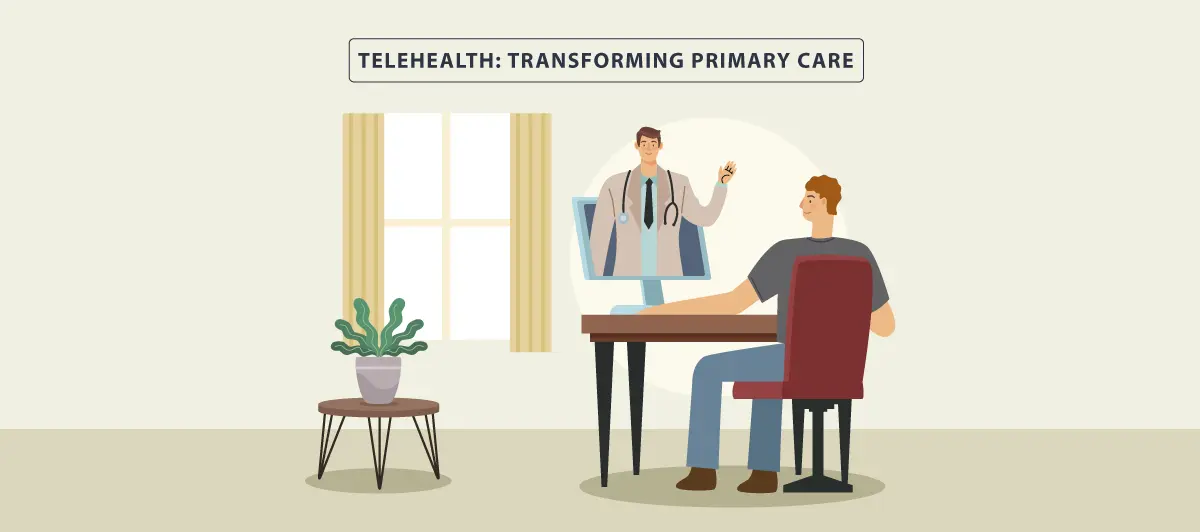Top 7 Benefits of Telehealth Platforms for Primary Care
Quick Summary: Telehealth platforms for primary care numerous advantages: convenient access to medical professionals, reduced travel time, cost savings, timely consultations, increased patient engagement, remote monitoring, and expanded healthcare reach. These benefits enhance healthcare delivery and patient outcomes, making Telehealth a vital innovation.
Introduction
Telehealth platforms have revolutionized the landscape of primary care by offering an array of advantages. These benefits reshape the delivery of healthcare services among people. Therefore these platforms have emerged as a beacon of convenience and innovation in today’s interconnected world, seamlessly connecting patients and doctors. It has further led to an increase in nearshore software development companies that develop ecommerce websites.
This content delves into the top seven benefits telehealth platforms bring to primary care. Hence it will elaborate on telehealth opportunities and how they transcend geographical barriers and amplify financial benefits and patient access.
By fostering improved treatment and patient outcomes, telehealth platforms provide personalized health care and empower individuals’ well-being. The efficiency gains are palpable, reducing time constraints and operational costs for healthcare providers everywhere.
Moreover, these platforms facilitate enhanced management of chronic conditions through remote monitoring, making timely interventions a reality. Therefore we explore the intricacies of the transformative impact of telemedicine in healthcare and on in-person appointments; it becomes evident that its potential to redefine healthcare in terms of physical and mental health.
An Introduction to Telehealth
Telehealth, a groundbreaking paradigm in medical care, has emerged as a dynamic solution to bridge the gap between patients and healthcare providers.
Telehealth platforms for primary care leverage digital technologies to facilitate remote medical consultations, diagnostics, and treatment plans. Hence by transcending geographical boundaries, telehealth services empower individuals to access quality healthcare from the comfort of their homes, transforming the healthcare landscape.
Many people might baffle how does tele health systems works? Telemedicine opens avenues for timely interventions, in-person care, and improved patient satisfaction through real-time video conferencing, secure messaging, and remote monitoring. If you are willing to develop an adult ecommerce web design, consult an expert company.
As we embark on a journey to understand the benefits of Telehealth, we unravel a realm where technology, medical education, direct communication, and healthcare converge to redefine medical accessibility, virtual care, and patient-centered services.
7 compelling reasons to consider Telehealth platforms
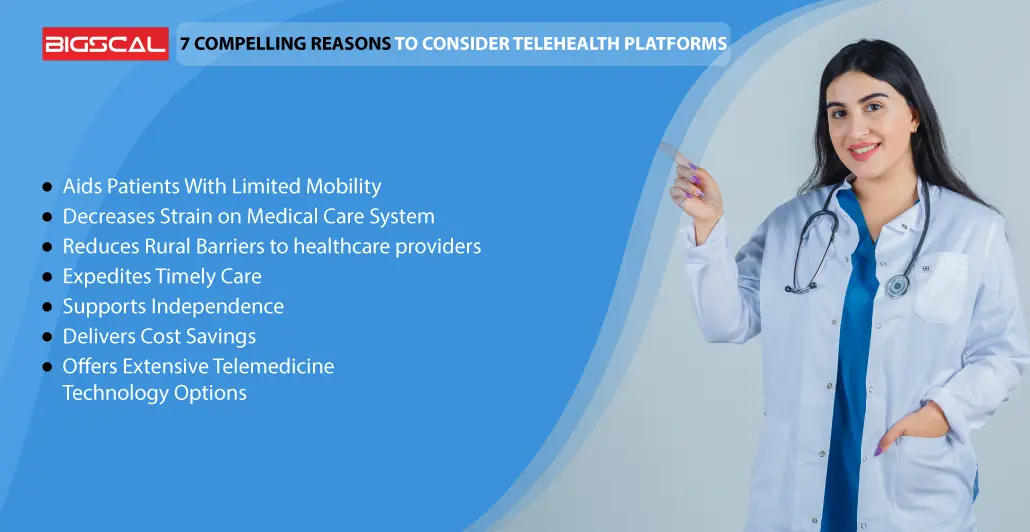
Telehealth platforms have been around for a very long time, maybe over decades. There are many medical professionals and patients that use technology to provide and seek health care services. Looking for reasons to adopt usage of telehealth platforms? Here are some of them:
1. Aids Patients With Limited Mobility

Patients that find it difficult to travel for any reason can benefit from telehealth appointments and get the most from the benefits of telehealth services. As per the article from US world news & Report, elderly patients with transportation challenges find the benefits of Telehealth services to be the best. Moreover, Medicare can be delivered to them through technology without the physical presence of a healthcare practitioner. Hence this technology ensures data driven monitoring senior citizens whenever and wherever needed.
Additionally, not only do seniors deal with the issue of mobility, but many others face the same. There are people in the parts of the world that do not have a reliable transportation source or might be facing disabilities. It could restrict them from seeking healthcare services. Therefore remote access to healthcare procedures could help them improve their quality of life. It also helps people suffering from major chronic illnesses who cannot go for frequent checkups.
2. Decreases Strain on Medical Care System

One of the significant health risks and concerns in the United States is patients’ access to health care. As per a Patient Engagement HIT article, easy access to patient health care services is inaccurate for many patients nationwide. Not only in the US but it is a worldwide problem.
Along with the new challenges of juggling between getting an appointment with a consulting physician and getting a ride to the place, accessing patient care has many troubles. Almost half of the adults in the United States find it difficult to access Medicare on weekends and evenings without an emergency department.
Hence it isn’t easy to get an appointment with a physician or healthcare provider in-person visits. They will have to wait longer to get into the office. And finally, when they get a chance for a doctor’s appointment, the time for traveling is a significant headache.
These problems might magnify in the coming years. All the reports surrounding these challenges found that telehealth services have a huge role to play. It will help deliver effective healthcare services in rural areas and avoid out-of-pocket costs. Whether it would be an online portal for after-hours medical coverage or voice-activated home tools that help patients remotely or remote patient monitoring, Telehealth is becoming needed.
3. Reduces Rural Barriers to healthcare providers
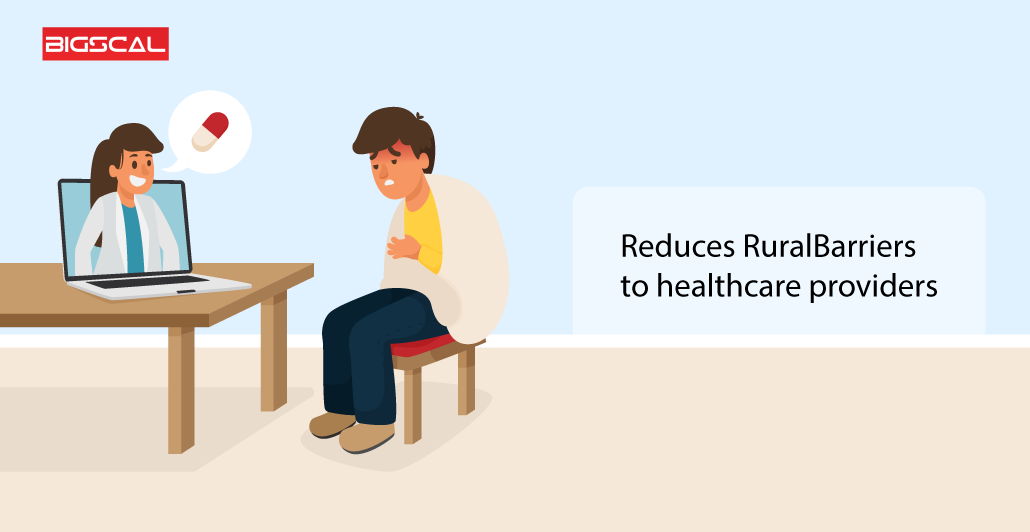
One of the most crucial benefits of telehealth platforms for primary care is its ability to overcome all the obstacles that hinder delivering quality medical care in rural areas. A recent poll found that one in every four people living in rural areas doesn’t have access to the healthcare they need. And the majority of them mentioned that the faraway locations of hospitals were the reason.
Additionally, the amount of rural hospitals is also decreasing. Hence telehealth visits can be a powerful tool to address these issues. As per an article, rural healthcare settings can seek the benefits of telehealth visits. It could reduce the distance between healthcare providers, hospitals, specialists, and patients. Hence no need to drive frequently for checkups. A virtual consultation on telemedicine could help if your locality lacks medical professionals.
4. Expedites Timely Care
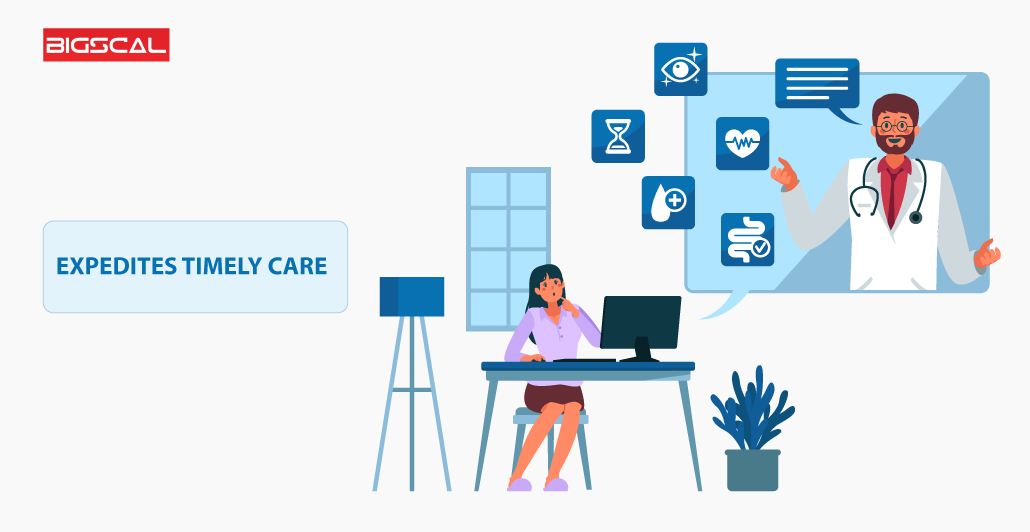
A massive challenge that the healthcare sector is facing is diverting the patient to the right healthcare provider as fast as possible. And while they are being sent to specialists or a specialist hospital, the health risk is the patient could unnecessarily trip to emergency or urgent care hospital. Hence this is a prime concern for doctors.
But employing telemedicine applications can help doctors provide care to elderly patients at the right time. There are chances of infectious diseases which needs diagnostic facilities. Hence, virtual visits to doctors using telehealth solutions could give doctors better situational awareness. Any consulting physician would have to have doctors refer them to an expert in severe medical conditions.
5. Supports Independence
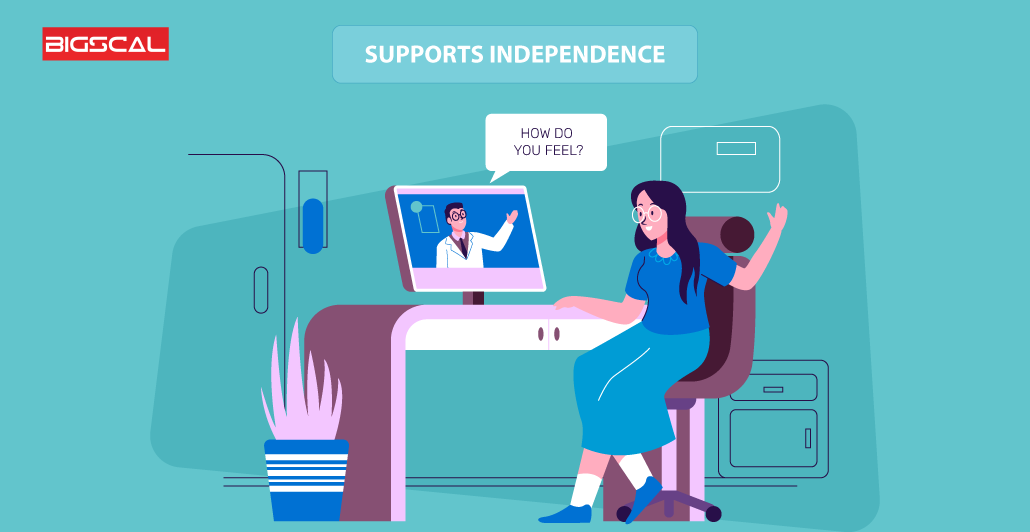
Almost every individual and even senior citizen prioritize independence. Their medical condition doesn’t matter; they think independence is a priority. Hence Telehealth solutions can play an essential role in patient satisfaction, patient adherence, and avoiding reliance on any person or institute.
A report from mHealth Intelligence states that telehealth platforms for primary care are helping seniors live in their homes without dependency through its innovations in virtual care. As per a survey, almost all seniors, regardless of age, want to get older in their homes. Hence they will need a technology that can be home-based to make their dreams come true.
6. Delivers Cost Savings
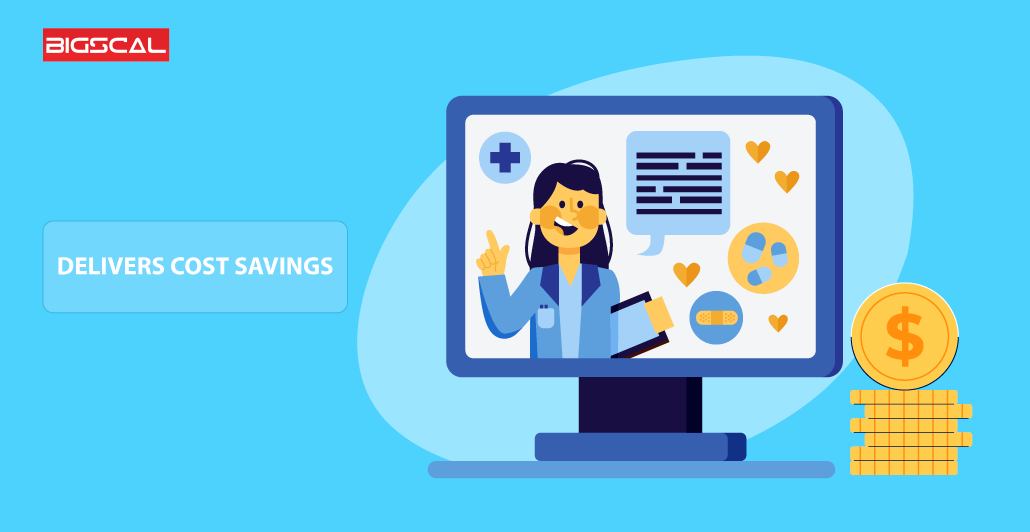
Along with all other medical advantages, Telehealth visits can also benefit outcomes regarding cost reduction. According to a survey from The American Journal of Emergency Medicine, the total savings from virtual visits might range between $19 and $121.
Moreover, experts also noted from this study that most cost-saving was done by preventing patients from ending up in emergency care. Hence, each patient that avoided emergency care saved an amount ranging from $309 to more than $1,500 per in-person primary care provider visit.
Another study found that the Telemedicine virtual visit charge was $38, significantly lower than physical ones. Also, it was revealed that healthcare providers could save $2,750 per patient through virtual visits instead of in-person treatments. And both modes of physical therapy were equally effective for reducing knee instability and treatment success, as reported.
7. Offers Extensive Telemedicine Technology Options
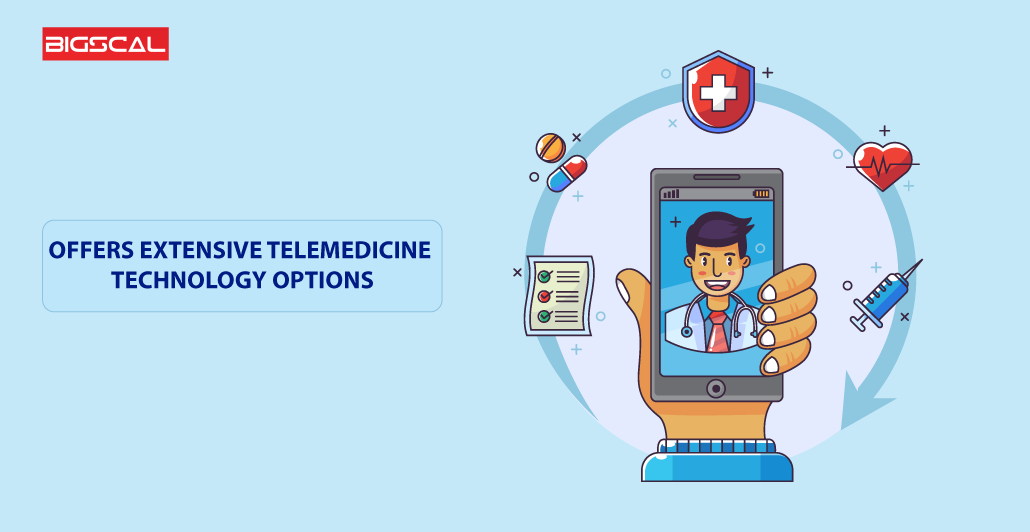
If you are an organization considering looking for the best telemedicine app development solution, here’s good news for you. Adding telehealth platforms for primary care to your clinical practice provides many remote healthcare practitioner options. Further, an article from Mayo Clinic lists the benefits of telemedicine technology that can help patients with diabetes. This list included:
- A mobile phone to upload data for review by a physician.
- An app for insulin dose estimation.
- A portal that can provide test results arrange telemedicine appointments, request prescription refills and talk to consulting physicians..
- Online aid for getting test items and medications.
- Reminders through devices for preventive care.
Organizations and hospitals can make the most of this technology and enhance their hospital services with benefits to telehealth and app development. Moreover, it could help them avoid potential disease progression and build patient-directed disciplines.
How does Bigscal help with developing telehealth platforms for primary care?
Bigscal’s expertise shines when it comes to telehealth platforms for primary care development. As one of the best telemedicine app development solutions providers, we are Angularjs development services providers that streamline the process and enhance the user experience. Want to know how Bigscal can make a significant impact? Here’s it:
-
- Customized Solutions: Bigscal understands that each telehealth platforms for primary care is unique. With our tailored approach, we create solutions that perfectly match the client’s requirements.
- Scalability: Telehealth platforms need to handle varying levels of traffic. Hence Bigscal’s architecture, cloud solutions and urgent care startup consulting ensures the platform remains stable and responsive, even during peak usage times, guaranteeing a seamless experience for all users.
- Security: Data privacy is paramount in healthcare web design. Bigscal implements robust security measures and ensures compliance with industry regulations like HIPAA, safeguarding sensitive patient information.
- Integration: Bigscal integrates various features, such as video consultations, appointment scheduling, electronic health records systems, and payment gateways.
- User-Friendly Interface: A user-friendly interface is crucial for patient engagement in the hospital. Bigscal’s design and development team ensures an intuitive interface, making it easy for patients and healthcare professionals to navigate and utilize the platform.
Hence, Bigscal’s comprehensive approach to Telehealth platform development guarantees a reliable, secure, and user-friendly experience.
Conclusion
Above mentioned are the various advantages telehealth platforms for primary care offer as per healthcare and career perspectives. Hence Telehealth is bringing about a transformative shift in medical care delivery. The top seven benefits of telehealth options outlined above collectively redefine the patient-provider relationship, enhancing accessibility, convenience, and quality of care.
Through virtual consultations, patients and healthcare providers can bypass geographical barriers, reducing travel time and costs while increasing medical access. These days developing an ecommerce website for healthcare is easier with companies like Bigscal.
Furthermore, integrating telehealth platforms for primary care encourages proactive health monitoring, empowering patients to take charge of their well-being. This approach contributes to better health outcomes and eases the burden on healthcare systems.
As telehealth platforms continue to evolve, it is evident that their role as primary care providers is a pivotal one. It is promising to reshape healthcare landscapes to improve patient satisfaction and a more connected future.
FAQ
What are the pros and cons of telehealth platforms for primary care?
Pros: Increased access, convenience, reduced travel, remote primary care provider, options.
Cons: Limited physical exams, technical issues, and data security concerns.
Who benefits from Telemedicine the most?
People in remote areas, the elderly, chronic illness patients, and busy medical professionals that need work-life balance can benefit from Telehealth.
Is telemedicine beneficial to medical care?
Yes, it enhances accessibility, offers remote care options, and aids early diagnosis.
What are the benefits of telemedicine that support quality care and patient outcomes?
The benefits of telemedicine for better treatment outcomes are timely intervention, consistent follow-ups, in-person visits, routine visits, and data-driven treatment adjustments.
What is the value of telehealth platforms for primary care to the patients?
Whether you have mental health problems or low blood pressure, digital health has a treatment plan. The convenience and benefits of telemedicine, appointments, reduced exposure, and better management of conditions are worth the value.
